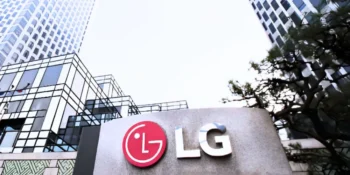In the pursuit of a sustainable future, the utilization of renewable energy sources has become increasingly vital. This article explores the concept of passive solar energy and highlights its potential as an effective renewable solution.
Understanding Passive Solar Energy
Passive solar energy refers to designing and utilizing building structures to optimize the absorption and distribution of sunlight for heating and lighting purposes. By strategically incorporating passive solar design principles, buildings can naturally collect, store, and distribute solar energy, minimizing the need for traditional heating, cooling, and lighting systems.
Among the various renewable options, passive solar energy is a promising solution. Passive solar energy offers an efficient and cost-effective means of meeting our energy needs while reducing our carbon footprint.
Harnessing Solar Energy and Design Principles
Passive solar energy uses the sun’s energy without mechanical or electrical devices. The basic principle behind the passive solar design is to take advantage of the sun’s heat during winter and minimize its impact during summer, achieved through careful planning and orientation of buildings, strategic use of materials, and incorporating passive solar technologies.
The passive solar design incorporates various architectural elements that maximize the utilization of sunlight. Key considerations include building orientation, window placement, insulation, thermal mass, and shading. South-facing windows are larger to capture the sun’s energy, while smaller windows on the north side minimize heat loss. Adequate insulation and thermal mass materials, such as concrete or stone, store heat during the day and release it at night, ensuring a more comfortable indoor environment.
Advantages of Passive Solar Energy
Passive solar energy offers numerous benefits that make it an effective renewable solution. By effectively utilizing the sun’s energy, passive solar design significantly reduces reliance on traditional heating and cooling systems, resulting in substantial energy savings. Passive solar design can significantly reduce energy bills, making it an economically viable solution in the long run. Additionally, the simplicity of the design reduces maintenance costs associated with active systems.
Passive solar energy produces zero greenhouse gas emissions, creating a cleaner and healthier environment. Minimizing dependence on fossil fuels helps combat climate change and air pollution. Passive solar buildings offer enhanced thermal comfort. Combining natural light, optimal temperatures, and improved air quality promotes a healthier and more enjoyable indoor living experience. Passive solar design often incorporates durable materials and construction techniques. These buildings can withstand extreme weather conditions, reducing the need for repairs and replacements.
Applications of Passive Solar Energy
Passive solar energy can be applied to various building types and scales. Passive solar design can be seamlessly integrated into new residential constructions or retrofitted into existing homes, reducing energy consumption and enhancing living conditions. Offices, schools, and other commercial structures can benefit from passive solar design, reducing energy costs and creating healthier work environments.
Utilizing passive solar principles in greenhouse design maximizes plant growth by optimizing temperature and light levels, reducing the need for artificial heating and lighting. Incorporating passive solar design principles into urban planning can lead to sustainable communities that are energy-efficient and environmentally responsible.
Potential Challenges and Considerations
While passive solar energy has significant advantages, a few challenges must be considered. Passive solar design should be tailored to the specific climate and geographical location. Factors like latitude, weather patterns, and available solar resources are vital in determining design strategies.
Although passive solar design offers long-term cost savings, initial investment costs may be higher than traditional building methods. However, energy savings over the building’s lifespan often offset these costs. Achieving optimal passive solar design requires careful planning and expertise. Collaboration with architects and engineers experienced in passive solar techniques is crucial to ensure effective implementation.
Conclusion
Passive solar energy presents a compelling solution to meet our energy needs sustainably. By effectively utilizing the sun’s energy, the passive solar design offers numerous benefits, including energy efficiency, cost-effectiveness, environmental friendliness, and improved comfort. As we strive for a cleaner and greener future, embracing passive solar energy can play a pivotal role in reducing our carbon footprint and creating more sustainable communities. Integrating passive solar principles into our buildings and urban planning can pave the way for a brighter and more sustainable tomorrow.














